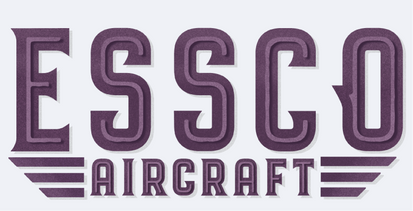
The Bede BD-5 Microjet: The Ambitious Aircraft That Almost Changed Aviation
Few aircraft in history have captured the imagination of pilots quite like the Bede BD-5. Created in the late 1960s by Jim Bede, the BD-5 was meant to revolutionize personal aviation, offering an ultra-light, high-performance aircraft with fighter jet aesthetics—all in a kit that homebuilders could assemble themselves. However, despite its groundbreaking design and overwhelming demand, the BD-5 never reached mass production due to technical difficulties and financial troubles.
Today, the BD-5 lives on as a legendary homebuilt aircraft, remembered for its sleek design, ambitious goals, and its Hollywood fame as the world’s smallest jet. But why did such a promising aircraft never take off commercially? Let’s dive into its history, challenges, and lasting legacy.
The Vision Behind the BD-5
Jim Bede, an aerospace engineer and entrepreneur, had already made a name for himself in the experimental aircraft world with the BD-1, which later became the successful American AA-1 Yankee. With the BD-5, he wanted to go a step further—bringing high-speed, jet-like performance to general aviation.
Bede’s concept was simple but revolutionary:
- A small, streamlined fuselage resembling a fighter jet.
- A bubble canopy for an unobstructed, panoramic view.
- A pusher propeller or jet engine mounted behind the pilot for maximum efficiency.
- Affordable kit construction, allowing amateur builders to assemble it in their own garages.
Initially, the BD-5 was designed with interchangeable engine configurations, meaning the builder could start with a propeller-driven version and later upgrade to a miniature jet engine.

Photo Credit: airliners.net - Steve Fitzgerald (BD-5J)
Unmatched Potential: What the BD-5 Could Have Done
Had the BD-5 reached full-scale production, it could have been a game-changer for general aviation. Here’s what it promised:
✔ Affordability – The BD-5 kit was priced between $1,950 and $2,965 in the early 1970s, making it one of the most budget-friendly high-performance aircraft available.
✔ Performance – With a cruise speed of 184 mph and a range of around 935 miles, the BD-5 could have been a practical cross-country aircraft for personal use.
✔ Aerial Acrobatic Dream – Its small size and power-to-weight ratio meant that it could have become a popular choice for airshows, aerobatics, and stunt flying.
The demand was staggering. Over 5,000 kits were pre-ordered, making it one of the most anticipated aircraft of its time. However, what looked like a promising future quickly turned into a cautionary tale.
Why the BD-5 Never Took Off
Despite all the excitement, the BD-5 never reached mass production. Here’s why:
1. Engine Problems
Finding a reliable, lightweight engine for the BD-5 turned out to be its Achilles' heel. The original design called for a Hirth two-cylinder engine, but the engine’s performance was inconsistent, and it failed to deliver enough power while remaining lightweight.
Bede tried replacing it with a variety of alternatives, but no suitable engine emerged. This led to long delays, frustrating customers who had pre-ordered kits.
2. Manufacturing & Supply Chain Issues
Bede Aircraft struggled with delivering full kits on time. Many early buyers only received partial kits, forcing them to source their own parts or abandon the project altogether. This severely damaged the company’s reputation.
3. Financial Collapse
The company was overwhelmed by cash flow issues, legal troubles, and the inability to resolve technical setbacks. By 1979, Bede Aircraft went bankrupt, leaving thousands of builders with incomplete aircraft and no official support.
Although some determined builders completed their BD-5s using third-party parts, the aircraft never reached the level of accessibility that was originally promised.

Photo Credit: flickr.com - Sam Myers
The BD-5’s Lasting Legacy
Despite its commercial failure, the BD-5 left an impressive mark on aviation history.
1. The BD-5J Microjet: Hollywood’s Favorite Small Jet
While the original BD-5 struggled, its jet-powered sibling, the BD-5J, found fame as the smallest jet aircraft ever built. With a tiny 14-foot wingspan and speeds over 300 mph, the BD-5J became an airshow sensation and even appeared in major films.
Most notably, it was featured in the 1983 James Bond movie, where it performed a thrilling chase scene, flying through a hangar and evading explosions. This moment cemented the BD-5J’s status as an aviation icon.
2. Admiration Among Homebuilders
Even today, enthusiasts continue to build and fly BD-5 variants. Some have retrofitted modern jet engines, while others have optimized the original propeller design for better performance and safety.
3. Influence on Modern Aviation
The BD-5 inspired numerous other small experimental aircraft, proving that compact, high-speed personal planes could be a viable concept. It also influenced the development of unmanned aerial vehicles (UAVs), with military and research groups taking inspiration from the aircraft’s design.
Conclusion: A Dream That Lives On
The BD-5 was a classic case of a visionary idea struggling against real-world challenges. While it never became the personal jet revolution Jim Bede had envisioned, its legacy remains strong—from airshows to Hollywood and in the hands of dedicated homebuilders.
Ultimately, the BD-5 is remembered not for what it failed to achieve, but for the bold innovation it represented. It remains a symbol of ambition, creativity, and the dream of personal jet-powered flight, proving that sometimes, even the most ambitious aircraft concepts leave a lasting impact.
See More:
Plane & Pilot Magazine - Bede BD-5 "Micro"
Experimental Aircraft Association (EAA) - Bede BD-5
Essco Links:
